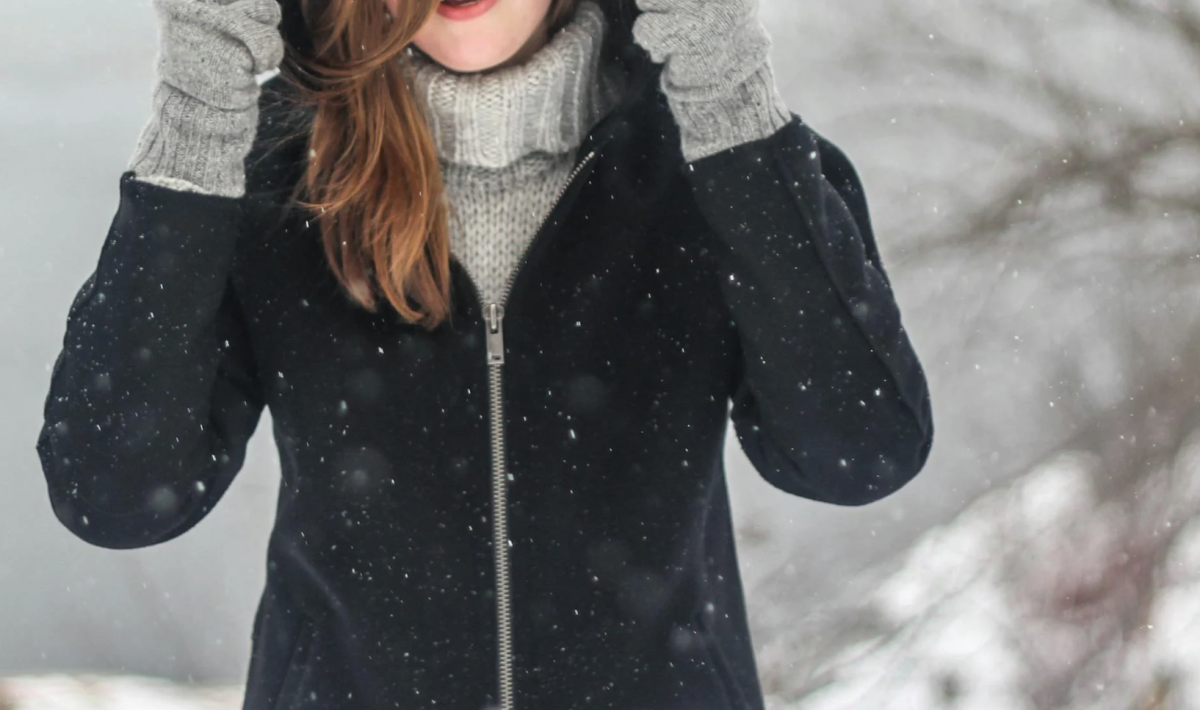
Winter brings more than just holiday cheer and cozy nights by the fireplace. For Americans over 60, the colder months present serious health and safety challenges that require thoughtful preparation and awareness. The statistics paint a sobering picture: falls are the leading cause of injury for adults ages 65 years and older.
The fall death rate increased by 41%, rising from 55.3 per 100,000 older adults in 2012 to 78.0 per 100,000 in 2021.
Winter months are particularly risky, with October, November, December, January, and parts of March showing higher rates of unintentional fall-related deaths than other times of the year.
The financial impact is also substantial.
Each year, medical care for fall-related injuries in older adults costs around $50 billion.
With the right knowledge and preparation, many of these risks can be reduced, helping older adults stay safe through the winter months.
Mastering ice and snow navigation
Slippery surfaces are among the biggest winter hazards for older adults.
About 37% of those who fall report an injury that requires medical treatment or limits their activity for at least one day.
Each year, approximately 3 million emergency department visits are related to falls among older adults.
Dr. Stanley Wang from Stanford Hospital notes that winter falls often result in serious injuries such as hip and wrist fractures, head trauma, and deep lacerations.
While younger individuals tend to recover more quickly, complications from these injuries remain a leading cause of death from injury among adults over 65.
"Unfortunately, falls are a common occurrence for senior citizens, especially during the winter months"
Beyond basic non-slip shoes, consider these advanced strategies:
- Upgrade your winter footwear: Look for boots with deep treads, ice grips, or detachable crampons specifically designed for seniors
- Ice cane tips: Replace worn rubber tips with ice picks or winter attachments that provide better grip
- Strategic timing: Plan outdoor activities during the warmest part of the day when ice may be softer or partially melted
- Create traction: Keep a small bag of sand or kitty litter to sprinkle on your walkway before heading out
Always remove shoes immediately when entering any building—the melted snow and ice on soles can create dangerous indoor slip hazards.
Also read: Are you mistaking frostbite for hypothermia? Learn the deadly difference!
Understanding hypothermia's deadly progression
Hypothermia occurs when the body’s core temperature drops below 95 degrees.
For older adults, this potentially life-threatening condition can develop more quickly and pose greater risks.
An early sign of hypothermia is vigorous shivering, but shivering may decrease or stop as body temperature continues to fall.
This can be misleading—when shivering stops, it does not indicate recovery but rather that hypothermia is progressing.
Warning signs to watch for include:
- Confusion or memory problems
- Slurred speech
- Drowsiness or lack of energy
- Shivering that suddenly stops
- Fumbling with clothing or objects
Emergency action for suspected hypothermia
If someone's body temperature drops below 95°F (confirmed by thermometer), call 911 immediately. While waiting for help: remove wet clothing, wrap in blankets, and offer warm (not hot) beverages if the person is alert. Never use direct heat like heating pads or hot water.
Fighting winter's mental health challenges
The shorter days and increased isolation of winter can contribute to mental health challenges.
Seasonal Affective Disorder (SAD) affects millions of Americans each year. Common symptoms include persistent sadness, fatigue, and reduced interest in daily activities.
Combat winter blues with these evidence-based approaches:
- Light therapy: Consider a 10,000-lux light box used for 20-30 minutes each morning
- Maintain social connections: Schedule regular phone calls, video chats, or socially distanced visits
- Stay active indoors: Join virtual exercise classes designed for seniors or practice gentle yoga
- Establish routines: Keep regular sleep and meal schedules to maintain your body's natural rhythms
Also read: Drivers beware: The winter car problem you didn’t know you had—solved!
Winterizing your vehicle for safety
Winter driving becomes more challenging as reflexes slow and confidence decreases. Beyond basic maintenance, consider these senior-specific preparations:
Essential vehicle updates:
- Install winter tires if you live in snow-prone areas
- Keep an emergency kit with blankets, water, non-perishable snacks, and a charged phone
- Ensure your roadside assistance plan includes seniors-focused services
- Practice using new car safety features like automatic emergency braking and lane departure warnings
Smart driving strategies:
- Plan routes during daylight hours when possible
- Allow extra travel time to avoid rushing
- Consider ride-sharing services or senior transportation programs during severe weather
- Keep your gas tank at least half full to prevent fuel line freezing
Did you know?
Did you know?
Many communities offer free or low-cost winter transportation services for seniors. Contact your local Area Agency on Aging to find programs in your area that can help you get to medical appointments and essential errands safely.
Also read: The 16 emergency kit essentials experts say every household should have—are you ready?
Preparing for power outages like a pro
Winter storms can knock out electricity for days. Standard emergency kits may not address seniors' specific needs:
Enhanced emergency supplies:
- Battery-powered or hand-crank weather radio with NOAA alerts
- Flashlights with lantern settings (easier on aging eyes than directional beams)
- Extra batteries in multiple sizes
- Seven-day supply of medications in waterproof containers
- List of important phone numbers written down (don't rely on cell phone contacts)
- Manual can opener and paper plates to reduce cleanup needs
Food considerations for seniors:
- Easy-to-open containers and packages
- Foods that don't require cooking: canned fruits, crackers, peanut butter, dried fruits
- Extra water for medication mixing if needed
- Consider nutritional drinks that provide complete nutrition in emergencies
Also read: Winter wellness: The ultimate tips to stay healthy!
Nutrition strategies for indoor months
Spending extended time indoors during winter can contribute to nutritional deficiencies that affect bone strength, immune health, and overall well-being.
Vitamin D deficiency is especially common and has been associated with cognitive decline, depression, and osteoporosis.
Winter nutrition priorities:
- Vitamin D sources: Fortified milk, fatty fish like salmon and tuna, fortified cereals
- Immune-supporting foods: Citrus fruits, bell peppers, broccoli, garlic, ginger
- Bone health: Dairy products, leafy greens, sardines with bones
- Mood-supporting nutrients: Foods rich in omega-3s, B vitamins, and magnesium
Consider talking to your healthcare provider about vitamin D supplements, especially if you have limited sun exposure during winter months.
Also read: Protect yourself on your next trip: What you need to know about carbon monoxide detectors
Preventing carbon monoxide poisoning
Using heating sources like fireplaces, gas heaters, or portable heaters increases carbon monoxide risks. This invisible, odorless gas is particularly dangerous for older adults.
Essential safety measures:
- Test carbon monoxide detectors monthly and replace batteries twice yearly
- Never use portable generators, grills, or camp stoves indoors
- Ensure proper ventilation around all heating appliances
- Have heating systems professionally inspected annually
- Learn the symptoms: headache, dizziness, nausea, confusion, chest pain
Winter safety essentials for seniors
- Invest in proper winter footwear with ice grips and maintain walking aids
- Monitor for hypothermia signs and keep thermometers accessible
- Combat seasonal depression with light therapy and social connections
- Prepare comprehensive emergency kits with senior-specific supplies
- Schedule annual heating system inspections and test safety detectors monthly
- Stock immune-supporting foods and consider vitamin D supplements
- Know when to ask for help - winter preparation is a community effort
Technology tools for winter safety
Modern technology offers new ways to stay safe during winter months:
- Medical alert systems: Wearable devices that can detect falls and automatically call for help
- Smart thermostats: Monitor home temperature remotely and send alerts if heating fails
- Weather apps: Provide detailed forecasts and severe weather warnings specific to your location
- Medication reminder apps: Ensure you don't miss doses when routines are disrupted by weather
Many of these technologies are becoming more senior-friendly with larger displays and simplified interfaces.
Also read: Experts reveal their top secrets to keeping your family cozy and safe this winter–don’t miss out!
Building your winter support network
The most important winter safety tip is knowing when and how to ask for help. Consider these community resources:
- Neighbor check-in systems: Arrange daily contact with nearby neighbors
- Faith communities: Many offer winter assistance programs for members
- Local senior centers: Often provide emergency services and transportation
- Professional services: Snow removal, grocery delivery, and home health aides
- Family communication plans: Regular check-ins via phone or video calls
What This Means For You
Winter brings unique challenges, but with preparation, awareness, and community support, it’s possible to stay safe and independent throughout the season.
Planning ahead is the best way to prevent emergencies before they happen.
Asking for help is not a weakness—it’s a practical step that can stop small issues from turning into serious problems.
Whether it’s clearing snow, stocking essential supplies, or arranging regular check-ins during severe weather, reaching out to family, neighbors, or local services can make a meaningful difference.
Read next:
- Why this 233-year-old weather guide could be your secret weapon for winter travel planning
- Stay warm this winter without turning up the heat—Walmart’s cozy $8.99 find
- 15 Winter vacation spots seniors will love—from cozy retreats to sunny escapes
What winter safety preparations have worked best for you? Share your tips and experiences in the comments below—they could help other readers stay safe and prepared this season.
Original Article
https://www.care.com/c/winter-safety-tips-for-seniors/
Older Adult Falls Data | Older Adult Fall Prevention | CDC
Cited text: Falls are the leading cause of injury for adults ages 65 years and older.1 Over 14 million, or 1 in 4 older adults report falling every year.2 This ch...
Excerpt: falls are the leading cause of injury for adults ages 65 years and older, with over 14 million, or 1 in 4 older adults reporting falling every year
https://www.cdc.gov/falls/data-research/index.html
Older Adult Falls Data | Older Adult Fall Prevention | CDC
Cited text: Falls are the leading cause of injury-related death among adults ages 65 and older, and the fall death rate is increasing.4 The age-adjusted fall deat...
Excerpt: the fall death rate increased by 41% from 55.3 per 100,000 older adults in 2012 to 78.0 per 100,000 older adults in 2021
https://www.cdc.gov/falls/data-research/index.html
Elderly Fall Statistics 2025 | ConsumerAffairs®
Cited text: The months of October, November, December, January and, to some extent, March show somewhat higher numbers of unintentional fall-related deaths than d...
Excerpt: the months of October, November, December, January and, to some extent, March show somewhat higher numbers of unintentional fall-related deaths than during the rest of the year
https://www.consumeraffairs.com/medical-alert-systems/elderly-fall-statistics.html
Winter Slip & Fall Injury Statistics | USClaims
Cited text: Each year, the cost of medical care for fall-related injuries in older adults amounts to around $50 billion[6].
Excerpt: Each year, the cost of medical care for fall-related injuries in older adults amounts to around $50 billion
https://usclaims.com/educational-resources/wintertime-slip-and-falls-create-serious-risk-of-injury/
Facts About Falls | Older Adult Fall Prevention | CDC
Cited text: While not all falls result in an injury, about 37% of those who fall reported an injury that required medical treatment or restricted their activity f...
Excerpt: About 37% of those who fall reported an injury that required medical treatment or restricted their activity for at least one day
https://www.cdc.gov/falls/data-research/facts-stats/index.html
Facts About Falls | Older Adult Fall Prevention | CDC
Cited text: One out of 10 falls results in an injury that causes the older adult to restrict their activities for a day or more or to seek attention from the heal...
Excerpt: each year, there are about 3 million emergency department visits due to older people falls
https://www.cdc.gov/falls/data-research/facts-stats/index.html
Cold Weather Injuries Peak in January, February - DHA.mil
Cited text: Hypothermia occurs when the body’s core temperature falls below 95 degrees.
Excerpt: Hypothermia occurs when the body's core temperature falls below 95 degrees
https://dha.mil/News/2025/01/14/15/21/Cold-Weather-Injuries-Peak-in-January-February
Cold Weather Injuries Peak in January, February - DHA.mil
Cited text: An initial sign of hypothermia is vigorous shivering, though shivering may decrease or even stop as a person’s core temperature continues to fall.
Excerpt: An initial sign of hypothermia is vigorous shivering, though shivering may decrease or even stop as a person's core temperature continues to fall
https://dha.mil/News/2025/01/14/15/21/Cold-Weather-Injuries-Peak-in-January-February






